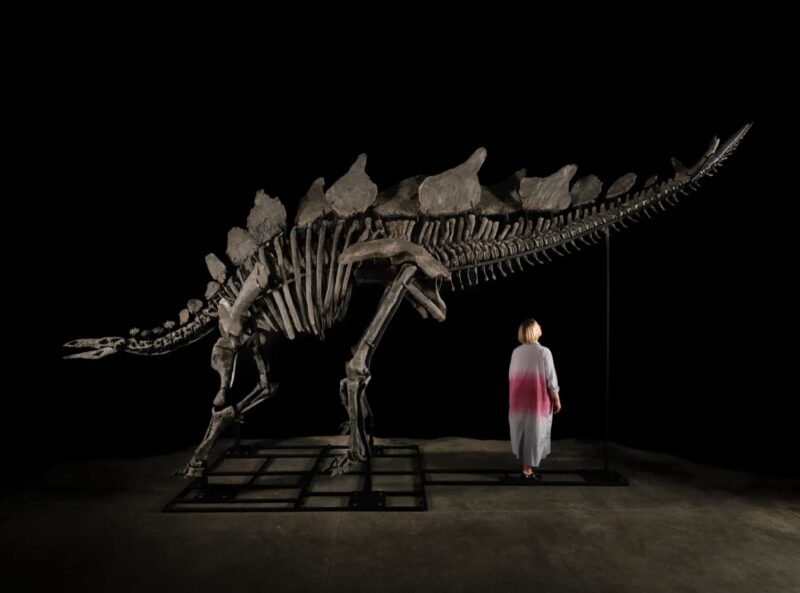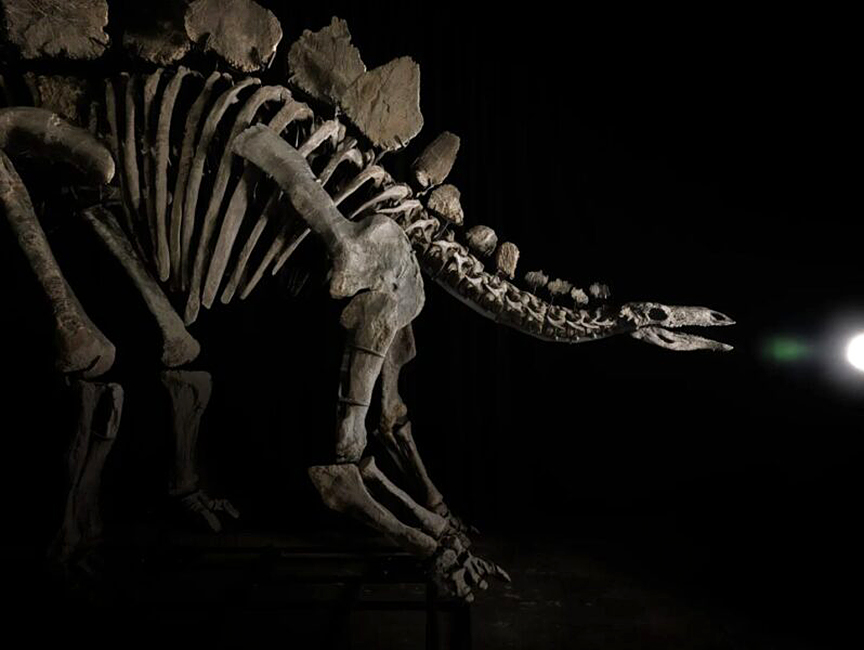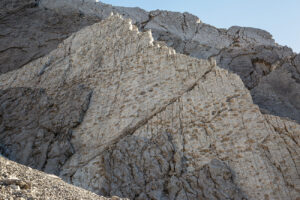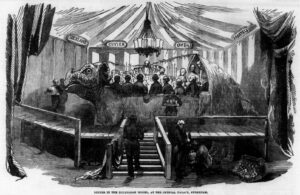Last week, American billionaire Kenneth Griffin bought the largest Stegosaurus fossil ever found. Griffin made the winning bid of $44.6 million at a Sotheby’s auction on July 17.
At 3.4 meters tall and 8.2 meters long, “Apex” is 30% larger than the next largest stegosaurus specimen. It is also the most complete Stegosaurus fossil ever uncovered, with 254 out of 319 bones intact. This large adult likely lived to a relatively old age since it shows signs of rheumatoid arthritis. It lived 150 million years ago.
With its fetching price, Apex became not only the largest but the most expensive dinosaur fossil ever sold. The previous winner was “Stan,” a Tyrannosaurus rex that sold at Christie’s in 2020 for $31.8 million.
Palaeontologist Jason Cooper discovered Apex in 2022 within the Morrison Formation, an expanse of sedimentary rock centered in Wyoming and Colorado but running into nine other states. The bones were in a section on Cooper’s private land.
Bidding frenzy
Seven potential buyers competed for the dinosaur, with Griffin emerging with the high bid after 15 minutes. Since procuring the ginormous fossil, Griffin — the CEO of the hedge fund Citadel — promised to loan Apex to a U.S. institution but said that it would not be leaving the country. “Apex was born in America and is going to stay in America,” he commented.
This sale brings back up an ongoing debate: Should fossils be sold to private buyers or go to museums where the public and researchers can access them? In recent years, private big-dollar sales have become more common, especially for dinosaur fossils.

Photo: Matthew Sherman/Sotheby’s
A controversial practice
Many paleontologists believe that such sales are questionable. The insane price tags make them inaccessible to museums and research institutions. For example, in recent years, Sotheby’s has sold a Deinonychus antirrhopus (a relative of the velociraptor) for $12.4 million, a T-rex tooth for $100,000, and a Gorgosaurus skeleton for $6.1 million. James Hyslop, head of science and natural history at Christie’s in London, said that prehistoric fossils can lure buyers from over 50 countries. Even online sites like eBay increasingly deal in the sale of fossils.
While celebrities and the wealthy add to their art collections, scientists and the public lose out. When an important fossil goes to a private buyer, it essentially disappears. Researchers estimate hundreds of yet-unknown dinosaur species might be disappearing without anyone even realizing it. Only high-profile private sales make the news. It is impossible to know how many others go from finder to buyer without anyone knowing.
The U.S., in particular, has become central to this booming fossil trade. While some countries, such as China, Mongolia, and Argentina, ban the export of fossils, America has not. In the U.S., if someone finds such a fossil on their land, they can do what they want with it. Many chose to give it to the highest bidder.
Though museums and researchers can bid for it, they generally lack the funds to compete with private high rollers. Speaking to The New York Times, paleontologist Jim Kirkland says he hopes that the buyer of this record Stegosaurus will put the fossil through a CT scan and make the data available to researchers.
‘Madness’
Others have said the price paid for this particular fossil is madness. Paleontologist Jingmai O’Connor told the Times, “Sorry, the paleontologists around me are laughing.”
Even though the fossil is in remarkably good shape, researchers already have so many partial Stegosaurus fossils that this one likely won’t add to our knowledge. They consider the bid somewhat ludicrous.
While private buyers are seemingly entranced by dinosaurs and enjoy showing them off as trophies, they do nothing to help public understanding of the creatures. Said O’Connor, “With $44 million, [scientists] could move forward our understanding of dinosaurs by decades.”






